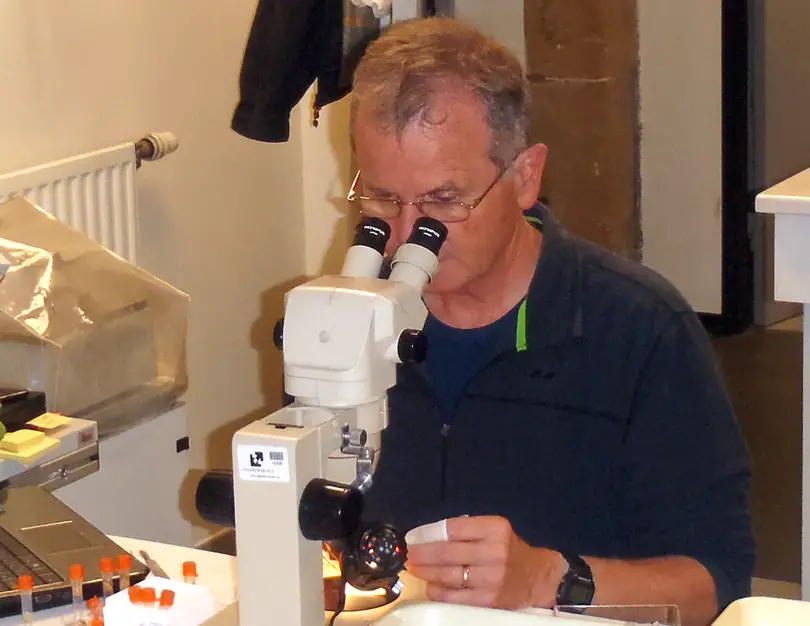Shell shocked: Alumnus creates chemical-free solution to eradicate invasive mussels in lakes
A SUNY-ESF graduate has devised a way to reduce the number of invasive mussels living in the Finger Lakes in a natural, chemical-free way.
Daniel Molloy, a research scientist from the State University of New York at Albany, created Zequanox, a biological control agent. It’s made up of Pseudomonas fluorescens strain CL145A, a bacteria that kills the mussels, said John Farrell, an associate professor of environmental and forest biology at The State University of New York College of Environmental Science and Forestry.
Molloy first gained experience with biological control agents doing his doctoral thesis at ESF in the 1970s. He tried to find a biological control method for black flies in the Adirondack Mountains.
“They gave me an incredible education,” he said, “I loved ESF.”
Molloy eventually came up with a way to control the flies, and now every month, teams travel to the Adirondacks and apply the control agent, he said.
When the zebra mussels appeared in the 1990s, the Department of Environmental Conservation asked Molloy to come up with a control agent for them.
“It took me 20 years,” he said. “I tested over 700 bacteria and only one killed the zebra mussels.”
The goal of his research, Molloy added, was to prevent people from applying chemicals inside of power plants. He wanted to give them the choice of a much safer control agent.
There are two forms of the invasive mussels: zebra and quagga mussels, Farrell said. They have little larvae with a thread called a bissel to attach to and grow onto native mussels.
The mussels were originally introduced through ballast water, which sailors use to stabilize ships traveling across open oceans, he said. The sailors discharge the water carrying the mussels into the Great Lakes in order to take on cargo.
Now, the mussels have spread across the United States and changed multiple lake ecosystems, Farrell added. They are filter feeders and have a tendency to clog pipes, which can adversely affect nearby industries.
Mussels can also drastically change the food webs in a lake’s ecosystem, which makes it more important to stop them from spreading, said Jesse Olsen, a senior in aquatics and fisheries sciences.
“They make the water clearer because they filter the water column. That causes more algae, which affect the food webs,” he said.
The mussels were first found in 1988 but were suspected to be in the Great Lakes region for a couple of years prior to that, Molloy said.
The mussels filter phytoplankton out of lakes and rivers, which alters the ecosystem, he said. Only freshwater mussels can attach to the hard surfaces.
The mussel’s presence have wide ranging effects on ecosystems, including getting rid of plant algae’s fine particles, clogging up industrial pipes and people cutting themselves on the mussels’ shells while walking into lakes.
Zequanox has been cleared to be used for treating the pipes and infrastructure that mussels have infested, Farrell said.
“A lot of industries use chlorine to kill mussels,” Farrell said. “This would be an advantage that is nontoxic.”
Molloy said he wants all plant operators to switch over to Zequanox, because it would be a lot safer for those who handle it.
Right now, the control agent is being used exclusively in power plants, but golf courses are starting to use it, Molloy said, as golf courses tend to draw water in from infested lakes or rivers and get clogged up.
People also want to use Zequanox to control the lakes in New York, but added that research still needs to be done to figure out what the agent’s concentration should be and how long it should be applied in a lake.
Published on March 3, 2014 at 2:05 am






